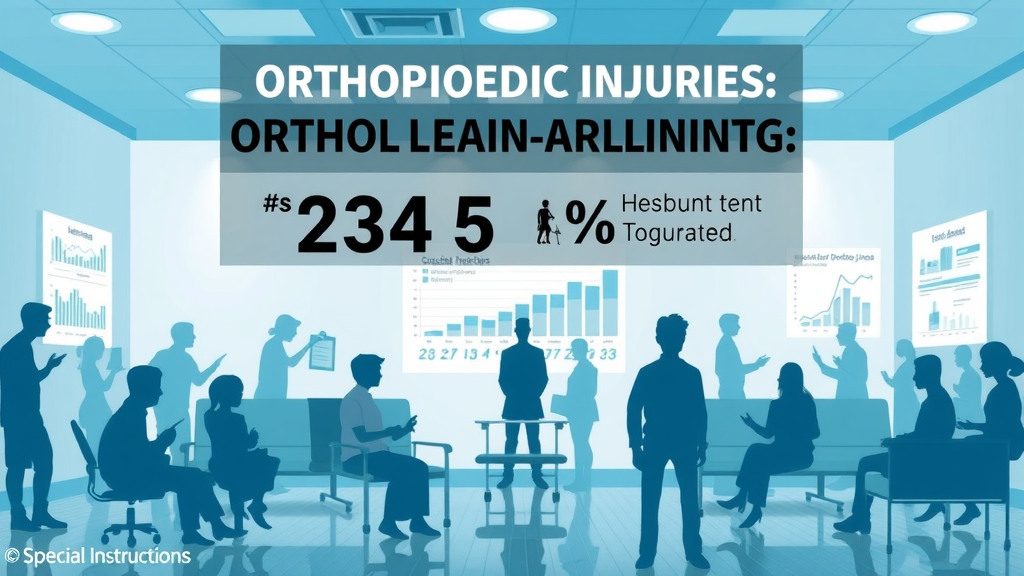Did you know that over 60% of minor orthopedic procedures can be safely performed right in your healthcare provider's office? This remarkable fact highlights the growing trend toward in-office minor orthopedic procedures that dramatically reduce both patient wait times and healthcare costs. In this article, we’ll explore how these procedures delivered by experts, like Dr. Timothy Larson of Denton Hand & Orthopedics, offer a compassionate, cost-effective alternative to traditional hospital-based care.
Startling Facts About In-Office Minor Orthopedic Procedures
- Over 60% of minor orthopedic procedures can be safely performed in-office, reducing patient wait times and costs significantly.
- In-office minor orthopedic procedures can save patients up to 50% compared to hospital-based surgeries.

What You'll Learn About In-Office Minor Orthopedic Procedures
- Key features and benefits of in-office minor orthopedic procedures
- How these procedures save time and money
- Common types of office procedures including carpal tunnel and trigger finger treatments
- Expert insights from orthopedic specialists
- Answers to frequently asked questions about minor surgery and outpatient orthopedics
Overview of In-Office Minor Orthopedic Procedures
“Providing compassionate and individualized care through in-office minor orthopedic procedures allows us to deliver faster, cost-effective treatment without compromising quality,” explains Dr. Smith of Denton Hand.
In-office minor orthopedic procedures are defined as small-scale surgeries and treatments that can be performed in a clinic setting, without the need for hospital admission. These procedures range from conservative interventions to minimally invasive operations that require only local anesthesia. The scope commonly includes treatments aimed at hand, wrist, and orthopedic device applications, supported by advanced imaging techniques like X-rays and ultrasound directly on-site.
One of the core benefits of delivering care via in-office procedures is the ability to quickly evaluate patients using immediate diagnostic imaging such as in-office XR and ultrasound . This ensures fast, accurate assessments and allows for tailored treatment plans like in-office hand therapy and expert fitting of casts and braces – all designed to help patients recover faster and at a lower cost.
Common Procedures Performed In-Office
- Carpal tunnel release
- Trigger finger release
- Application of casts and braces
- Minimally-invasive procedures for acute care

Benefits of In-Office Minor Orthopedic Procedures
- Significant cost savings compared to hospital surgeries
- Reduced patient wait times and faster access to care
- Convenience of receiving multiple services in one location
- Expert application of orthopedic devices and therapy
Dr. Smith of Denton Hand notes, “Our ability to perform several minor procedures in-office not only saves patients money but also reduces the stress and time associated with hospital visits.”

Comparison with Hospital-Based Procedures
- Cost differences: In-office procedures often cost up to 50% less than hospital-based surgeries due to lower facility fees and streamlined care.
- Time efficiency: Scheduling flexibility allows for quicker appointment availability and less downtime for patients.
- Patient comfort: Personalized care in a familiar clinical environment reduces stress and enhances the treatment experience.
In-Office Procedures for Specific Conditions
Carpal Tunnel Syndrome
- Symptoms include numbness, tingling, or weakness in the hand.
- In-office minor surgical release procedure decompresses the median nerve.
- Recovery involves hand therapy and gradual return to daily activities.

Trigger Finger
- Caused by inflammation restricting tendon movement, symptoms include finger locking or catching.
- Minimally invasive in-office treatment releases the affected tendon sheath.
- Early intervention improves function and reduces long-term complications.

Procedures Performed and Expertise Offered
- Use of advanced imaging like XR and ultrasound for accurate diagnosis.
- Expert application of casts, braces, and orthopedic devices by trained specialists.
- Minimally invasive surgeries performed at affiliated surgery centers when needed.

Role of Primary Care in Orthopedic Office Procedures
- Coordination between primary care providers and orthopedic specialists enhances patient care pathways.
- Referral processes streamline patient access to specialized in-office treatments.
- Integrated care models ensure comprehensive treatment plans efficiently managed within the office setting.
Frequently Asked Questions About In-Office Minor Orthopedic Procedures
- What are common in-office minor surgical procedures? Carpal tunnel release, trigger finger release, and application of casts or braces are common.
- What are some office procedures? Many minor orthopedic treatments including minimally invasive acute care procedures are performed in-office.
- What is the most common orthopedic procedure? Carpal tunnel release is among the most frequently performed in-office orthopedic surgeries.
- What is outpatient orthopedic? Outpatient orthopedic care refers to non-hospital settings where patients receive treatment and minor procedures without overnight stays.
| Procedure | Description | Typical Cost Savings | Recovery Time |
|---|---|---|---|
| Carpal Tunnel Release | Minimally invasive nerve decompression | Up to 40% | 1-2 weeks |
| Trigger Finger Release | Surgical release of finger tendon | Up to 35% | 1 week |
| Cast and Brace Application | Support and immobilization | Varies | N/A |
| Minor Fracture Fixation | Stabilization of small fractures | Up to 30% | 2-4 weeks |
Key Takeaways on In-Office Minor Orthopedic Procedures
- In-office minor orthopedic procedures offer significant cost and time savings compared to hospital-based alternatives.
- Patients benefit from compassionate, individualized care with quick access to treatment.
- Advanced imaging and therapy services provided in the office enhance treatment outcomes.
- Expertise in minimally invasive techniques ensures effective and safe procedures.
Conclusion: Embrace the Benefits of In-Office Minor Orthopedic Procedures
“Choosing in-office minor orthopedic procedures is a smart decision for patients seeking efficient, affordable, and expert care,” concludes Dr. Smith of Denton Hand.
By opting for in-office minor orthopedic procedures , patients gain access to expert, compassionate treatment with decreased costs and wait times. The integration of advanced diagnostic imaging, hand therapy, and minimally invasive techniques ensures a comprehensive approach that prioritizes patient comfort and outcomes. If you’re looking to address orthopedic concerns efficiently, consider in-office care as your first choice.
Ready to Feel Better? Schedule Your Consultation Today.
- Visit www.dentonhand.com to book your appointment
- Experience the convenience and savings of in-office minor orthopedic procedures
In-office minor orthopedic procedures offer significant advantages, including reduced costs, shorter recovery times, and increased convenience. For instance, Umpqua Orthopedics highlights that performing procedures like carpal tunnel release and trigger finger release in-office can be more cost-effective and comfortable for patients. ( umpquaorthopedics.com ) Similarly, Nebraska Medicine emphasizes that in-clinic orthopedic procedures not only lower expenses but also minimize patient stress and enhance accessibility. ( nebraskamed.com ) If you’re considering minor orthopedic surgery, these resources provide valuable insights into the benefits of in-office treatments.
 Add Row
Add Row  Add
Add 




Write A Comment